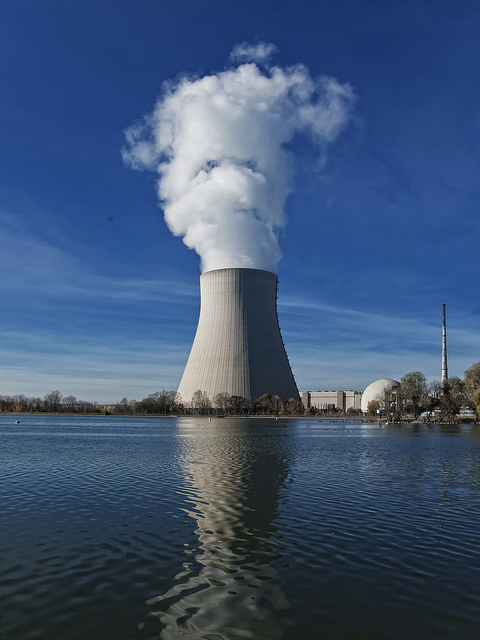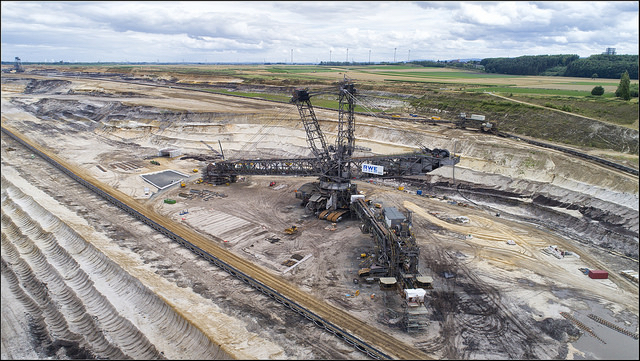Winning with Wind — Part IV
By: Tuuli Martin
October 26, 2017

[In Parts I, II, and III of Winning with Wind, Part II of Winning with Wind, Virginia Tech Master of Natural Resources student Tuuli Martin introduced Germany’s Energiewende (the transition toward renewables) program, the role of public opinion in the country’s shift to renewable energy, resistance, and integrating wind energy into the existing power grid. Tuuli will finish this review of wind energy in Germany with a look at the impact on fossil fuel and what lies ahead.]
Impact on Fossil Fuels
It is evident that fossil fuels become less popular and less profitable as renewables gain market share. However, conventional power sources still hold significant economic value. In order to assess the influence of Germany’s energy transition on the rest of the world, impacts on fossil fuel industry should be included. Dependency on conventional power sources is directly linked to climate threatening amounts of CO2 emissions.
Achieving climate goals will require retreating from fossil fuels and fulfilling the energy demand from renewable sources. Germany has made great progress in increasing the share of renewables in their energy mix. However, the future of conventional energy is ambiguous.
As of 2016, the share of power produced from renewables accounted for approximately 38 percent of Germany’s energy mix.1 The other 62 percent was produced from non-renewable sources, mostly from coal, lignite (brown coal), and uranium. For the purpose of clarification, production volumes do not equal the share in consumption due to grid constraints. It is clear that Germany will phase out nuclear energy in the near future. There is a strong public demand for closing all nuclear power plants.2 The extent and time for retreating from coal and lignite remains unclear.

The utilization of conventional power plants has remained largely unchanged so far. The decrease in the consumption of fossil fuels is offset by increased exports.3 The national renewables target is set for a total gross energy consumption, which means energy export is separated from that goal. Policy makers assert that until market conditions become equal across the European Union, shutting down coal mines will jeopardize Germany’s economic competitiveness.4
Input from conventional power plants plays a role in stabilizing the fluctuating energy supply from renewables. Constant availability of energy is important for any economic activity. Input from fossil fuels will be needed as long as the conditions allow for a stable energy market from renewables.
Renewable energy development is still underway. There have been short periods of time when energy from wind and solar covered the majority of the national demand. At the same time, there have been periods when renewables barely supplied one tenth. Unnerstall, expert on German energy industry, predicts that fossil fuel backup will be needed at least until 2030.5
The gross final energy consumption shall exceed 50 percent by then. Because the German energy policy gives priority to renewable energy and determines profits by the amount of energy produced, conventional power plants will become economically unsustainable over time. The rate of this transition will be influenced by the renewables grid expansion and future policies.

Germany has not developed any concrete strategies for phasing out coal. The question is expected to be solved in the coming year, after the federal elections this fall.6 The current fossil fuel dependent energy sector is the largest emitter of CO2. The sector accounts for approximately 40 percent of the total national emissions.7
Given the current trend, an expert commission assessed the probability of achieving the 2020 emissions reduction target unlikely. While renewable energy avoided nearly as much emissions as were produced by coal in 2016, achieving climate goals will only be possible if renewables replace coal.8

The impact of renewable energy development on fossil fuels is ambiguous. Energy consumption from conventional sources has declined, but export opportunities have kept the production levels relatively stable. The increasing share of renewable energy will bring Germany closer to climate goals over time. However, the targets may not be reached in a desired timeframe. The exact role of fossil fuel energy will be dependent on the progress in the European Union, other potential trade partners, and future national energy policies.
Developing renewable energy will avoid carbon emissions, but these savings will not be sufficient alone. Mitigating the energy sector’s impact on climate will require an actual decrease in fossil fuel utilization. Given the current market conditions, Germany seems to create benefits for other countries, but is challenged by it in their own transition.
Germany As a Model for Transition to Renewable Energy
Germany’s Energiewende serves as a pilot project. Reforming the energy industry will inevitably impact economic, social, as well as the environmental sphere. It will also be influenced by foreign markets. Germany has experienced both support and resistance along the way. Renewable energy, particularly onshore wind has gained a remarkable market share.
Yet conventional power industry has not lost its economic importance. Because Germany has taken a leader role, their successes and challenges can benefit other nations that plan a similar transition.
Germany is a low wind country with high population density. Many countries in the world have higher wind energy potential than Germany. Despite the constraints due to low wind quality, land availability, and other limitations, wind energy provides more supply than any other renewable in the country. A stable investment environment and safeguards to economic competitiveness have encouraged both institutional and citizen investments, distributing costs and benefits in the society. Germany’s current energy industry involves many stakeholders, whereas in most countries it is controlled by few companies. Decentralized management is greatly supported by German citizens.

Public support is crucial for such a fundamental and expensive undertaking. As an early mover, German citizens have experienced notable increases in their electricity expenditure. However, the cost is likely to be lower in other countries. Heavy investments in renewables in Germany have contributed to falling technology prices worldwide.
Even in the light of high development costs, onshore wind power is the most cost-effective renewable energy source in Germany. Furthermore, utilization of wind avoided nearly as much emissions as were produced by coal in 2016. Given that fossil fuels still account for two thirds of the energy production, increasing wind share can bring enormous benefits. However, initial costs will be high.
Delivering green energy to the consumer will require changes to the existing power system. Germany has the best conditions for wind generation in the northern part of the country. In contrast, the most energy-intensive industries are in the southern part. Whether to invest in north-to-south power lines or regional development has been a contested issue.
Local resistance has hindered the transition progress. It is important to account for social norms as they play a part in accepting new energy installations. Prioritizing areas away from settlements and wildlife migration routes could prevent conflicts with communities and conservation objectives. It is certain that some form of citizen involvement will increase progress rate. Information sharing in planning, execution, and monitoring phase can benefit all societies.
Also, considering areas of higher energy demand and production early in the process may prevent delays in necessary grid expansion. Strategies that make decreases in conventional power production simultaneous to increases in renewables will determine the probability of reaching climate targets.
Germany does provide a good model for utilizing wind energy. The wind energy sector has grown to be the most important source of renewable energy in Germany. In contrast, retreating from fossil fuels has proven to be challenging. However, the transition is still in a relatively early progress phase and the coming years may bring strategies for phasing out fossil fuels. Other countries will certainly benefit from Germany’s efforts in innovation, fallen technology prices, and lessons in the social and environmental spheres.
---

[Tuuli Martin is a graduate student in Virginia Tech’s Master of Natural Resourcesprogram. She expects to receive her degree in May 2018.].
[Creative Commons License photo from Flickr courtesy of: The Danish Wind Industry Association, , Bjoern Schwarz, Bert Kaumann, and Windwärts Energie.]
1. “Electricity generation in Germany in 2017.” Fraunhofer ISE, 2017.
2. Thomas Bauwens, Boris Gotchev and Lars Holstenkamp, “What drives the development of community energy in Europe? The case of wind power cooperatives,” Energy Research & Social Science 13 (2016): 136-147.
3. Thomas Unnerstall, The German Energy Transition (Berlin: Springer, 2017).
4. Benjamin Wehremann, “SPD’s Westphal: “Conditions to set coal exit date lacking”,” Clean Energy Wire, July 26, 2017.
5. Unnerstall, The German Energy Transition.
6. Irene B. Ruiz, “How far is Germany from a complete coal exit?,” Deutsche Welle, April 3, 2017.
7. Agora Energiewende. The Energiewende in a nutshell. Berlin: Agora Energiewende, 2017.
8. Sven Egenter and Benjamin Wehrmann, “Experts call for CO2 price to retain Energiewende’s credibility,” Clean Energy Wire, December 15, 2016.
9. Ibit.


